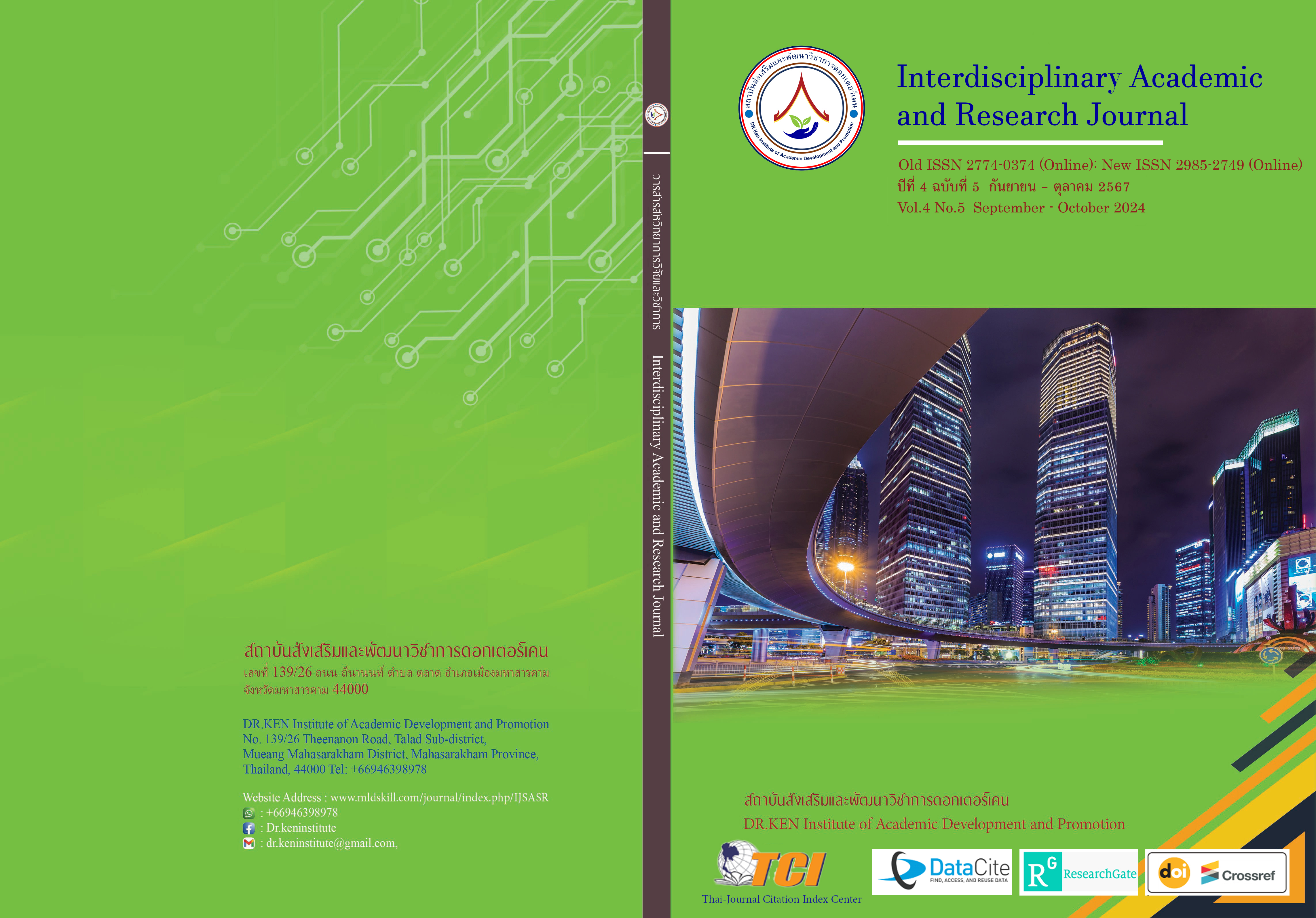Service Innovations that Influence the Utilization of Private Hospitals in Thailand
DOI:
https://doi.org/10.60027/iarj.2024.280940Keywords:
Service Innovation; , Service Utilization;, Private HospitalsAbstract
Background and Objectives: The private hospital industry in Thailand has been adversely affected by the slow economic growth, leading to cautious spending among the middle-income group, which is the primary customer base for private hospitals. This has resulted in a significant decline in the number of patients. This research aims to: 1) explore the general characteristics of private hospital users in Thailand; 2) examine the level of perceived service innovation that influences the decision to use private hospitals in Thailand; and 3) identify service innovations that have an impact on the decision to use private hospitals in Thailand.
Methodology: The sample consisted of 400 users of private hospitals in Thailand. Specific data was collected using a questionnaire. Descriptive statistics such as mean and standard deviation were used, along with Pearson's correlation and stepwise multiple linear regression.
Results: 1) Most users were female, aged between 40-60 years, with a bachelor's degree, employed in the private sector, and had a monthly income of 30,001-50,000 baht. 2) Perception of service innovation was significantly correlated with the decision to use private hospitals, particularly in the areas of interaction with users (Mean = 4.14, S.D. = 0.741), service concept (Mean = 4.03, S.D. = 0.512), and technology (Mean = 3.45, S.D. = 0.582). The least significant aspect was new service delivery processes (Mean = 3.11, S.D. = 0.654). 3) Service innovation factors influencing the decision to use private hospitals were service concept (β)=0.134, interaction with users (β)=0.094, new service delivery processes (β)=0.213, and technology (β)=0.145.
Conclusion: Private hospitals should adopt service innovations to enhance customer satisfaction and encourage repeat business. This will contribute to the long-term success and sustainability of the business.
References
Bhaskara, G.I., & Filimonau, V., (2021). The COVID-19 pandemic and organizational learning for disaster planning and management: A perspective of tourism businesses from a destination prone to consecutive disasters. Journal of Hospitality and Tourism Management, 46, 364 - 375.
Cheng, C.-C., Chang, Y.-Y., & Chen, C.-T. (2021). Construction of a service quality scale for the online food delivery industry. International Journal of Hospitality Management. International Journal of Hospitality Management. 95(4), 102938. DOI:10.1016/j.ijhm.2021.102938
Den Hertog, P. (2000). Knowledge-Intensive Business Services as Co-Producers of Innovation. International Journal of Innovation Management, 4, 491-528. https://doi.org/10.1142/S136391960000024X
Hfoucus. (2024). Private hospital situation. Retrieved April 23, 2024 from: https://www.hfocus.org/topics.
Kautish, P., Paul, J., Sharma, R., (2021). The effect of assortment and fulfillment on shopping assistance and efficiency: An e-tail services cape perspective. Journal of Retailing and Consumer Services, 59. Article 102393. DOI: 10.1016/j.jretconser.2020.102393
Ribeiro, G., & Cherobim, A. P. M. S. (2021). Environment and innovation: Discrepancy between theory and research practice. 14(1), 30–40.
Shortell, S.M., O’Brien, J.L., Carman, J.M., Foster, R.W., 2024. Assessing the impact of continuous quality improvement/total quality management: concept versus implementation. Health Services Research. 30(2), 377–401.
The Bangkokpost. (2024). The food delivery challenge. Retrieved April 23, 2024 from https://www.bangkokpost.com/business/1965615/delivery-platforms-dig-in-for-war.
Wanitbuncha, K. (2014). Structural equation modeling analysis by AMOS. Chulalongkorn University Press.
Downloads
Published
How to Cite
Issue
Section
License
Copyright (c) 2024 Interdisciplinary Academic and Research Journal

This work is licensed under a Creative Commons Attribution-NonCommercial-NoDerivatives 4.0 International License.
Copyright on any article in the Interdisciplinary Academic and Research Journal is retained by the author(s) under the under the Creative Commons Attribution-NonCommercial-NoDerivatives 4.0 International License. Permission to use text, content, images, etc. of publication. Any user to read, download, copy, distribute, print, search, or link to the full texts of articles, crawl them for indexing, pass them as data to software, or use them for any other lawful purpose. But do not use it for commercial use or with the intent to benefit any business.
















.png)


